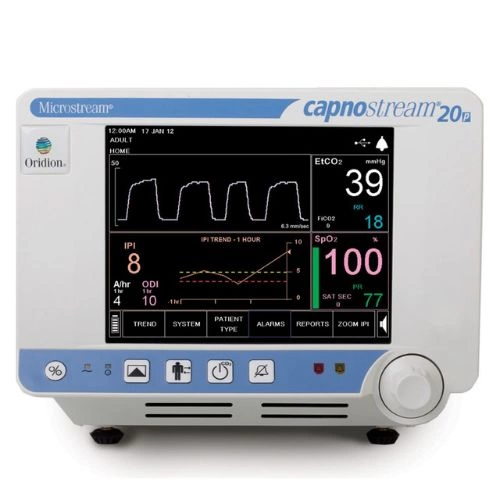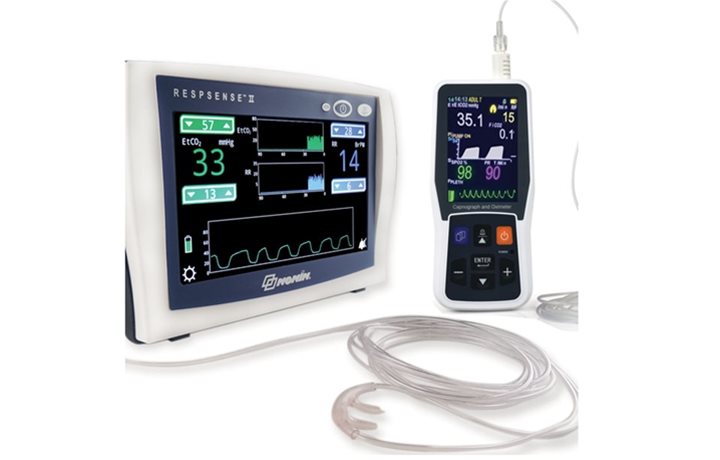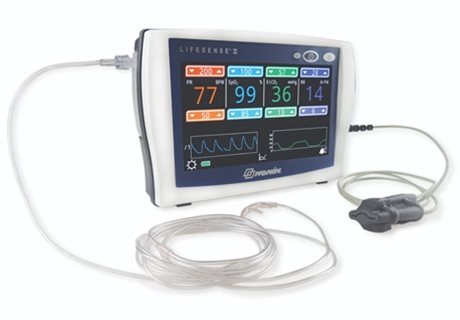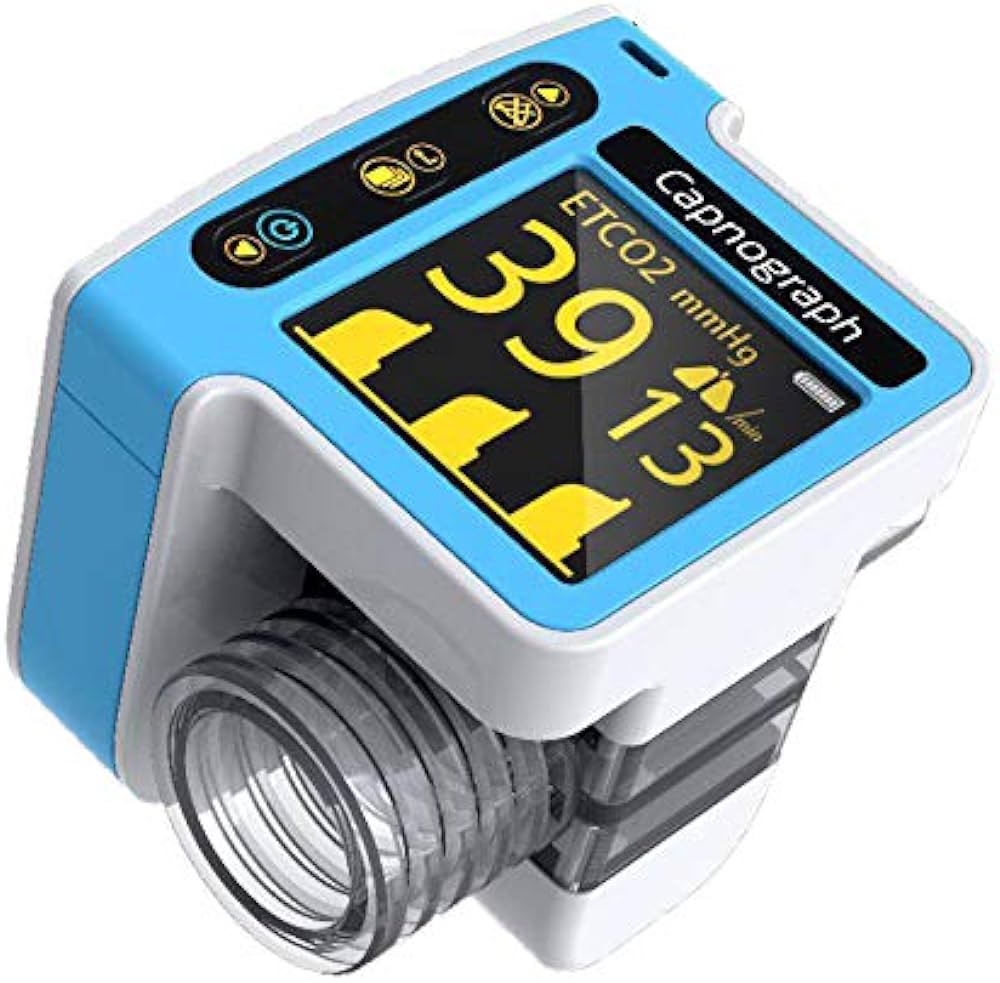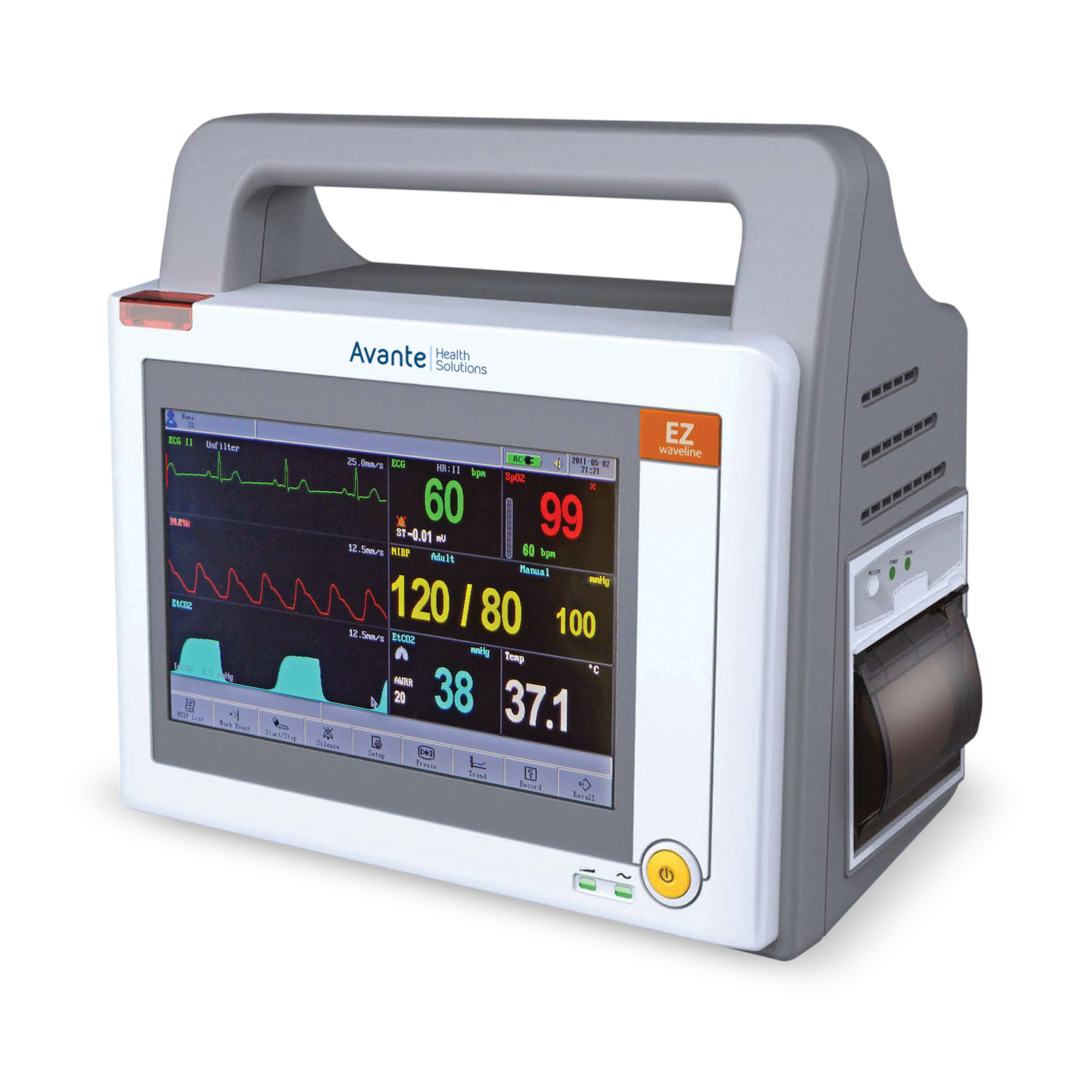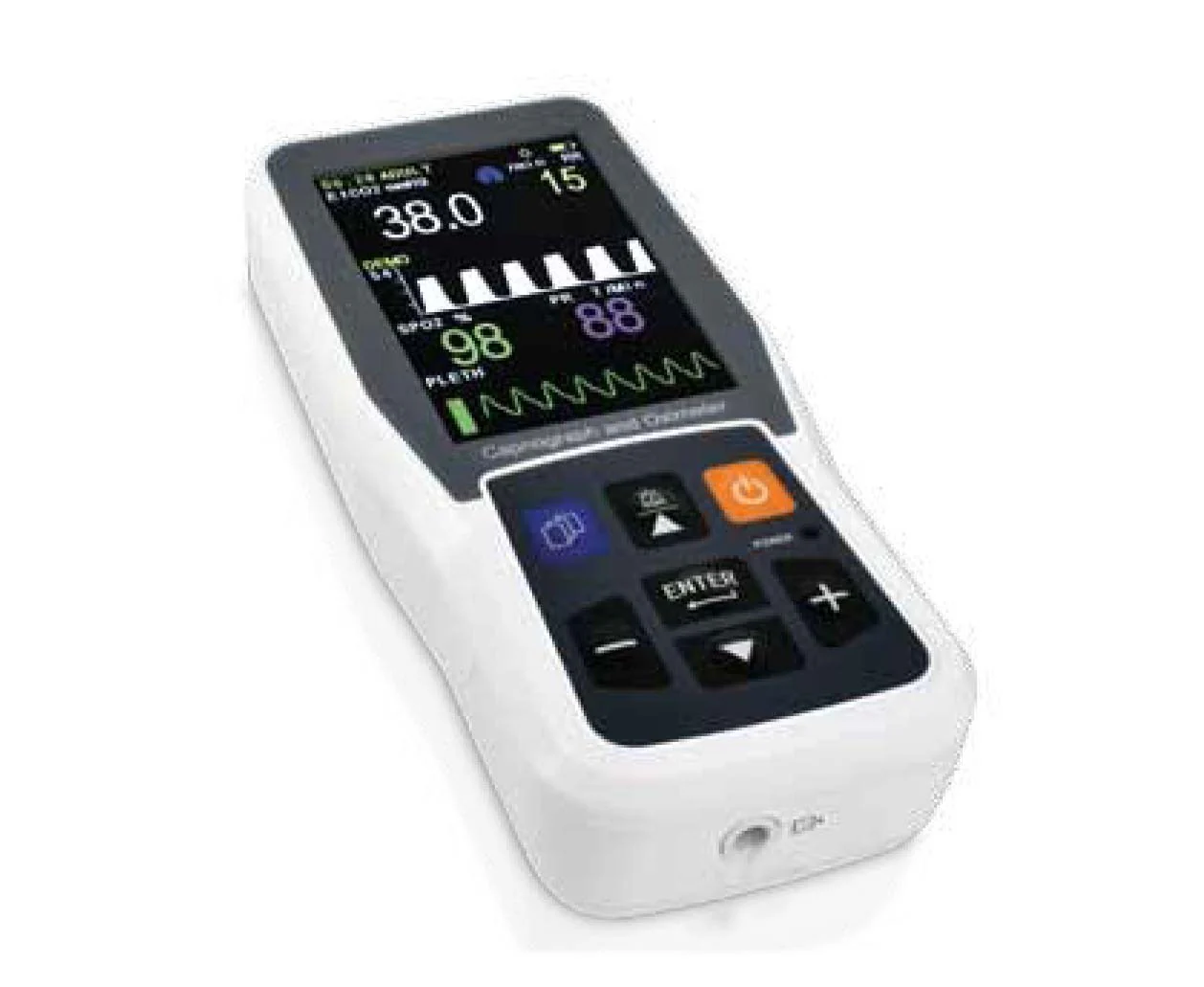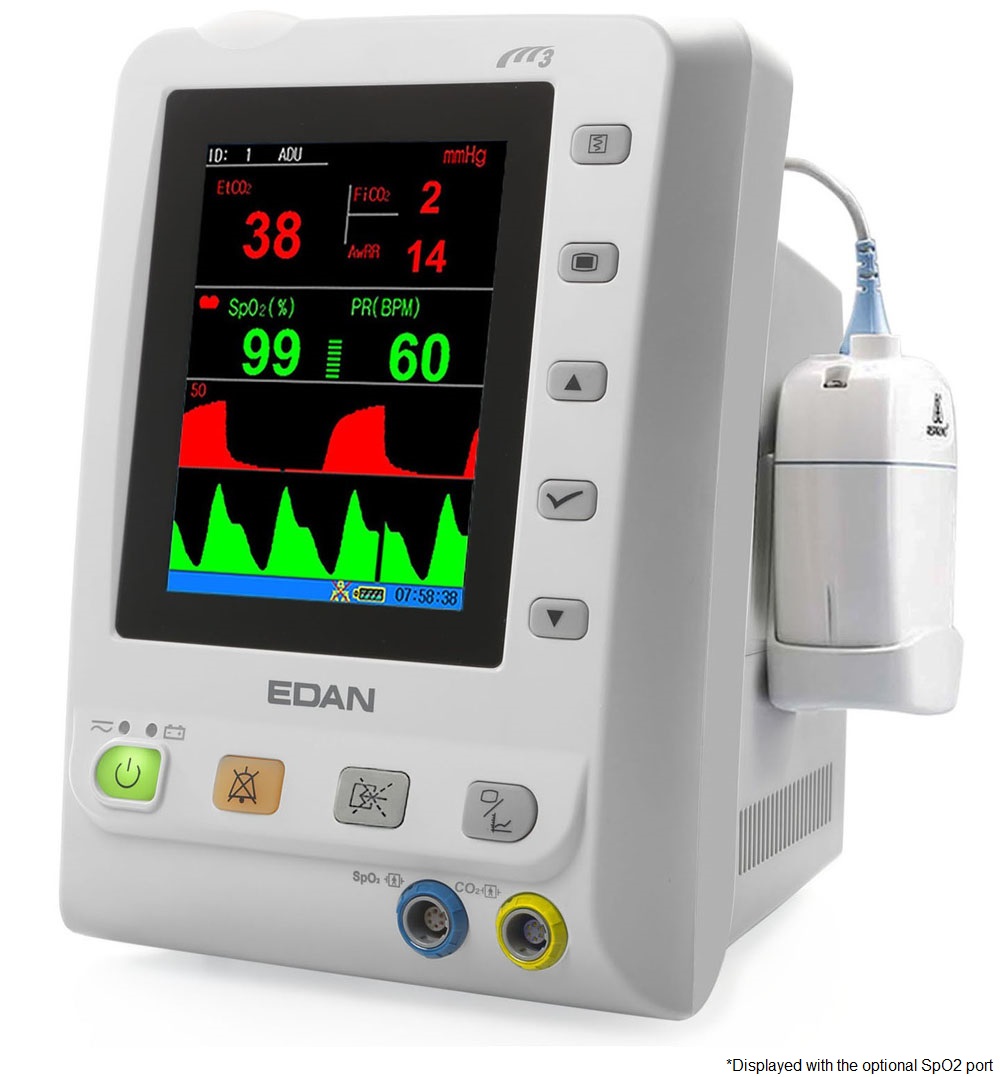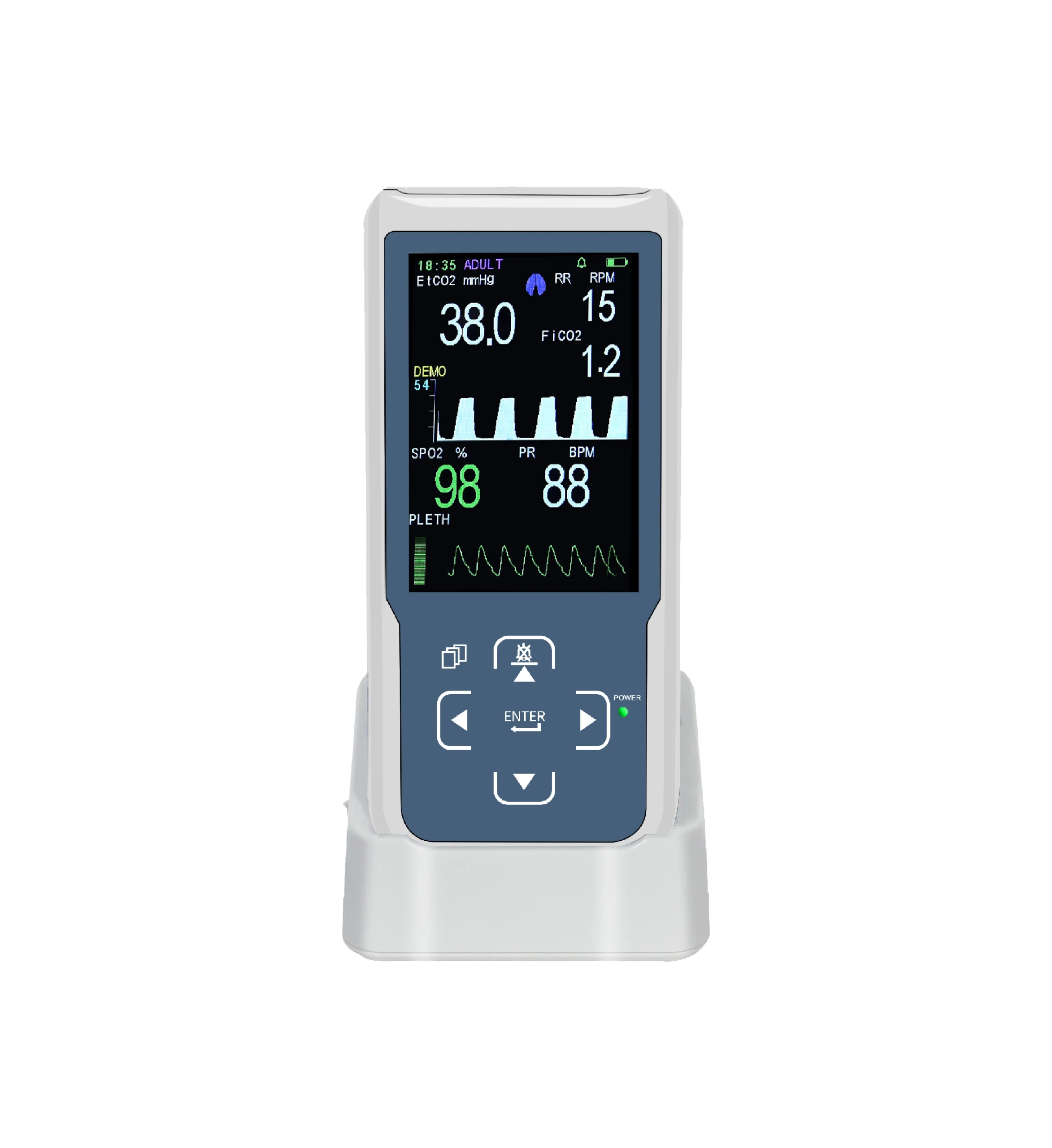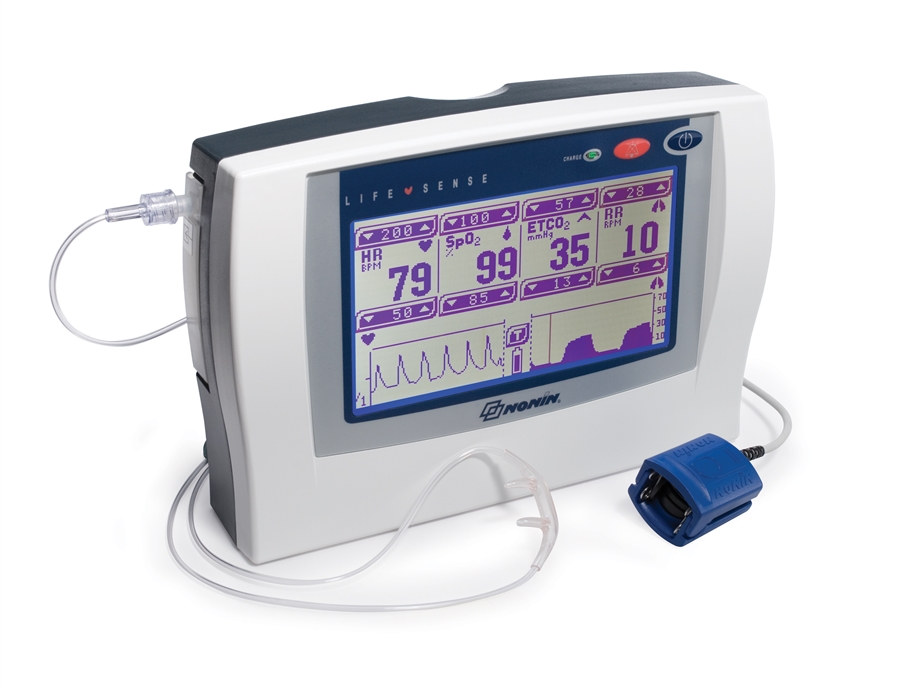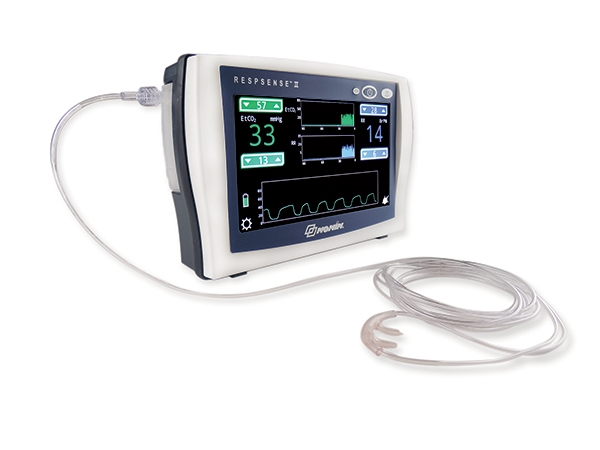Description
Capnography monitors are essential tools in both clinical and emergency settings, providing real-time measurement of carbon dioxide (CO2) levels in exhaled breath. These devices work by capturing and analyzing the concentration of CO2, which serves as a valuable indicator of a patient’s respiratory status and metabolic function. The primary output of a capnography monitor is the capnogram, a waveform that displays CO2 levels throughout the respiratory cycle, allowing healthcare providers to assess the adequacy of ventilation and detect potential respiratory distress.
One of the significant advantages of capnography is its ability to provide immediate feedback during procedures such as intubation and sedation. By continuously monitoring CO2 levels, clinicians can quickly identify issues like inadequate ventilation or displacement of the endotracheal tube. Furthermore, capnography is increasingly being utilized in pre-hospital settings, where paramedics can assess patient condition more accurately, guiding treatment decisions and improving outcomes during transport.
Moreover, capnography plays a crucial role in the management of patients with conditions like chronic obstructive pulmonary disease (COPD) or obesity hypoventilation syndrome. In these cases, elevated levels of CO2 can indicate worsening respiratory failure, prompting timely intervention. As technology advances, capnography monitors are becoming more portable and easier to use, making them accessible in various settings—from operating rooms to intensive care units and even home care environments. The integration of capnography into routine patient monitoring highlights its importance in enhancing patient safety and optimizing respiratory care.

